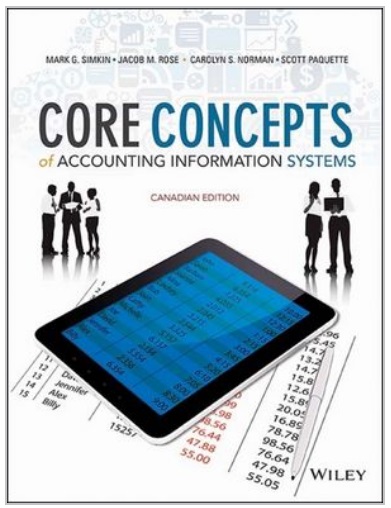In the early 20th century, there was an ambitious young man named Arthur who started working at
Question:
In the early 20th century, there was an ambitious young man named Arthur who started working at a company in Calgary as a mailroom clerk. He was a hard worker and very smart, eventually ending up as the president of the company, the Bow River Manufacturing Company. The firm produced steel wool and harvested sea sponges in Victoria, British Columbia, for household and industrial use. The company was very successful, and Arthur decided that the best way to assure the continued success of the company was to hire trusted family members for key management positions—because you can always count on your family. Arthur decided to hire his brother Benny to be his Chief Financial Officer (CFO) and placed other members of the family in key management positions. He also started his eldest son, Arthur Junior (an accountant by training), in a management training program, hoping that he would eventually succeed him as president. As the company moved into the 1920s, Benny was a model employee; he worked long hours, never took vacations, and made sure that he personally managed all aspects of the cash function. For example, he handled the entire purchasing process—from issuing purchase orders through the disbursement of cash to pay bills. He also handled the cash side of the revenue process by collecting cash payments, preparing the daily bank deposits, and reconciling the monthly bank statement. The end of the 1920s saw Canada and the United States entering its worst Depression since the beginning of the Industrial Age. Because of this, Arthur and other managers did not get raises, and, in fact, took pay cuts to keep the company going and avoid layoffs. Arthur and other top management officials made “lifestyle” adjustments as well—for example, reducing the number of their household servants and keeping their old cars, rather than purchasing new ones. Benny, however, was able to build a new house in Banff, Alberta, and purchased a new car. He dressed impeccably and seemed impervious to the economic downturn. His family continued to enjoy the theatre, new cars, and nice clothes. Arthur’s wife became suspicious of Benny’s good fortune in the face of others’ hardships, so she and Arthur hired an accountant to review the books—external audits were not yet required for publicly held companies. Jim the accountant was eventually able to determine that Benny had diverted company funds to himself by setting up false vendors and having cheques mailed to him. He also diverted some of the cash payments received from customers and was able to hide it by handling the bank deposits and the reconciliation of the company’s bank accounts. Eventually, Jim determined that Benny had embezzled about $500,000 (in 1930 dollars). If we assume annual compounding of 5% for 72 years, the value in today’s dollars would be about $17.61 million! Arthur was furious and sent Benny away. Arthur sold most of his personal stock holdings in the company to repay Benny’s embezzlement, which caused him to lose his controlling interest in the company, and eventually he was voted out of office by the board of directors. Jim, the accountant, wrote a paper about his experience with Benny (now referred to as “Bad Bad Benny” by the family). Jim’s paper contributed to the increasing call for required annual external audits for publicly held companies. Arthur eventually reestablished himself as a successful stockbroker and financial planner. Benny disappeared and was never heard from again.
Requirements
1. Identify the control weaknesses in the revenue and purchasing processes.
2. Identify any general controls Arthur should have implemented to help protect the company.
3. From Chapter 9, identify the internal control activities that Arthur should have considered (or implemented) that would have thwarted Benny’s bad behaviour.
Compounding is the process in which an asset's earnings, from either capital gains or interest, are reinvested to generate additional earnings over time. This growth, calculated using exponential functions, occurs because the investment will...
Step by Step Answer:

Core Concepts Of Accounting Information Systems
ISBN: 9781118738108
1st Canadian Edition
Authors: Mark G. Simkin, Carolyn A. Strand Norman, Scott Paquette





